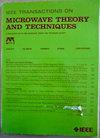A Preclinical System Prototype and Experimental Validation of Focused Microwave Brain Hyperthermia
IF 4.1
1区 工程技术
Q2 ENGINEERING, ELECTRICAL & ELECTRONIC
IEEE Transactions on Microwave Theory and Techniques
Pub Date : 2024-12-18
DOI:10.1109/TMTT.2024.3482986
引用次数: 0
Abstract
Focused microwave hyperthermia is a noninvasive, non-ionizing, and accurate treatment method that is promising for dealing with many kinds of cancers. Although focused microwave brain hyperthermia (FMBH) has been studied by some previous works, experimental evaluation of this technique in a practical experimental context has not been reported. This article aims to address this issue by developing a preclinical system prototype of FMBH and performing systematic experimental evaluation using several realistic head phantoms. We designed a 1.3-GHz hyperthermia applicator with 17 antennas and built nine different head phantoms based on a real human skull. We perform electromagnetic and thermal simulations and prove that the designed applicator can reliably achieve a good focused field and求助全文
约1分钟内获得全文
求助全文
来源期刊

IEEE Transactions on Microwave Theory and Techniques
工程技术-工程:电子与电气
CiteScore
8.60
自引率
18.60%
发文量
486
审稿时长
6 months
期刊介绍:
The IEEE Transactions on Microwave Theory and Techniques focuses on that part of engineering and theory associated with microwave/millimeter-wave components, devices, circuits, and systems involving the generation, modulation, demodulation, control, transmission, and detection of microwave signals. This includes scientific, technical, and industrial, activities. Microwave theory and techniques relates to electromagnetic waves usually in the frequency region between a few MHz and a THz; other spectral regions and wave types are included within the scope of the Society whenever basic microwave theory and techniques can yield useful results. Generally, this occurs in the theory of wave propagation in structures with dimensions comparable to a wavelength, and in the related techniques for analysis and design.
 求助内容:
求助内容: 应助结果提醒方式:
应助结果提醒方式:


